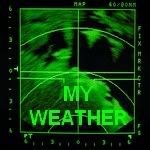Ovaltine packaging / Ayer’s Rock or Uluru / the coat of the Number 5 greyhound / the sticky monkeyflower / goldfish / molten lava / the desert death adder / the sea-shell voluta musica / private buses in Istanbul / Muppet drummer Animal / Jacob’s Cream Crackers wrappers / orang utans / fig roll packets / bajai (Indonesian three-wheeled taxis) / spines of Penguin books / dormice / teddy boys’ socks / Bart Simpson’s shirt / the Tango Man / jack o’lanterns / the East London line on the Tube map / Irish setters / traffic cones / RCA record labels / sunsets over lake Erie / the wandering sea anemone / fire / Reese’s chocolate wrappers / the top half of the adopted flag of the Scilly Isles / flowering maple / Tuc wrappers / price labels in bargain stores
tiger lilies / circle on the ‘mechanical failure’ flag in motor racing / scallop ‘coral’ / marmalade cats / female forktails / a cheetah’s eyes / card-phone boxes in Scandinavia / the chest of the bar-tailed godwit in breeding season / tartrazine / double Gloucester cheese / one seventh of a rainbow / tangerines / Fanta / Guantanamo Bay prison uniforms / the California poppy / linings of bomber jackets / pumpkins / the tail of the yellow-footed rock wallaby / buses in Milan and Rome / basketballs / Vine Street in London Monopoly / milkweed bugs / sweet potatoes / Irn Bru / badge huntsman spiders / dodder stems / fire opal / the vinyl of ‘The Day the World Turned Dayglo’ by X-Ray Spex / the rare mineral crocoite / tobiko (flying fish roe) / Blackpool FC’s shirts / spacehoppers / Buddhist monks’ gowns / Kenny’s coat in South Park / early Trojan record labels / Protestant sashes / bicycle safety flags
the eyes and chins of female spotted turtles / Dale Winton, Judith Chalmers and other hyper-tanned TV hosts / ricordea mushroom coral / chemical hazard symbols / female panther chameleons / papaya flesh / one of the balls in pool / mineolas / Louder Than Bombs by The Smiths / bromine vapour / the halloween lady beetle / Wotsits / Cyndi Lauper’s hair / flags to mark the start of a sailing race / Roast Chicken flavour crisp bags / autoclave bags / marmalade / Cherokee flag / the viceroy butterfly / butternuts / the belly of the pumpkinseed fish / ginger nut packets / airbag lights / sporting colours of the Netherlands / needleball bloom / the hepatic tanager / life jackets / euonymus scale eggs / carrots / starfish / the Sport & Leisure category in Trivial Pursuit / half a tiger
vitamin Q





















